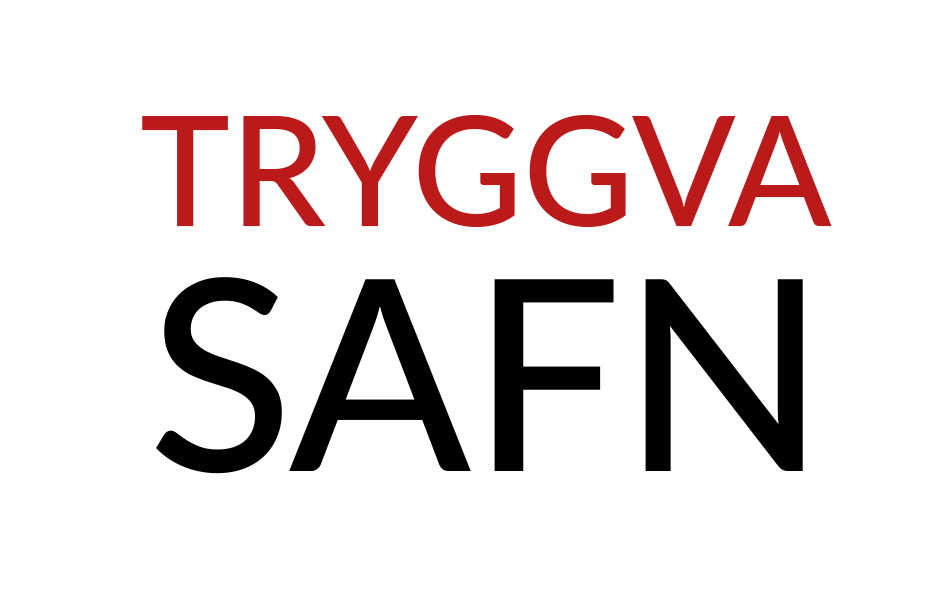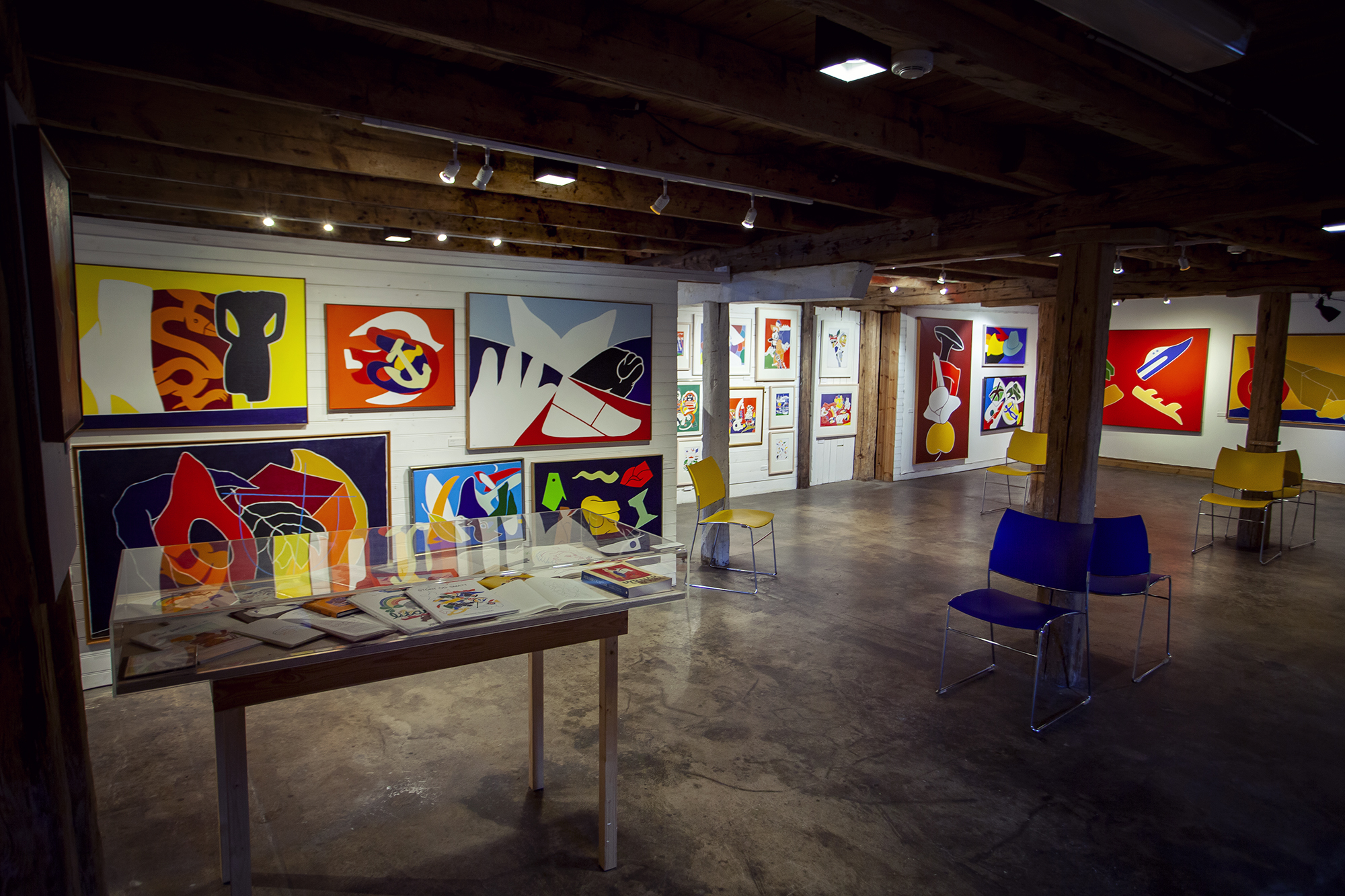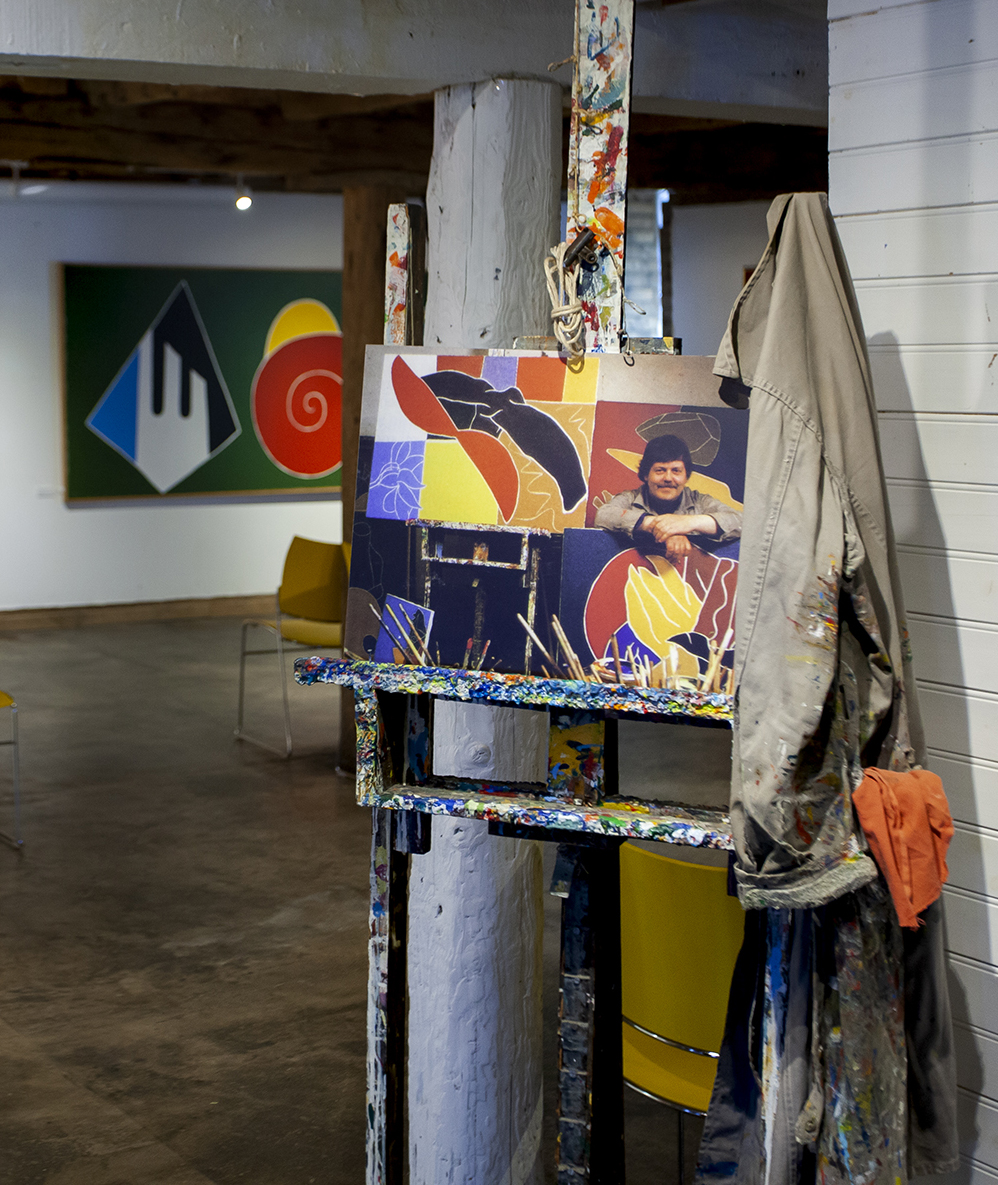The Art Collection
Origins
Magni Kristjánsson, a former sea captain on Neskaupstaður vessels, had known Tryggvi Ólafsson since childhood. He kept up with Ólafsson’s progress in the arts through the years and, along with his wife Sigríður Guðbjartsdóttir, collected the painter’s works. As adults, Kristjánsson and Ólafsson renewed their friendship, so that whenever Kristjánsson happened to be in Copenhagen, he always visited the painter at his atelier.
Kristjánsson’s interest was such that he got the idea of asking the artist whether he might be interested in establishing a collection of his works in his old hometown. Once Kristjánsson had aired this idea in a lengthy Christmas letter in 2000, Ólafsson himself became enthused, and the two of them immediately started preparing to found such a museum in Neskaupstaður. They sensed the significance of preserving and showing not only paintings but also other items related to Ólafsson’s life, such as notebooks, sketches, all sorts of working drawings and further information on his career. Initially, they figured that the preparations would take six to ten years, but in reality they progressed much more quickly.
About the same time as the idea came up of founding a museum, Kristjánsson bought the cooperative’s old store and office building at Hafnarbraut 2, Neskaupstaður. It was partly because this building provided excellent facilities for art exhibitions that the museum was so quickly established; moreover, the municipal council of Fjarðabyggð proved highly supportive when requested.
Opening
The Tryggvi Ólafsson Art Collection was formally opened in the old coop on 29 September 2001, or less than two years after the idea was first mentioned. The opening was celebrated through a major painting exhibition that spanned Ólafsson’s entire career. In a speech, the Icelandic Minister of Culture opened the museum and handed over a large Ólafsson painting as a gift, besides announcing a founding grant from the State. At the same time, Fjarðabyggð municipality announced that it intended to provide the museum with an annual grant for purchasing artistic works.
Ólafsson himself had seen to hanging up the 99 paintings and collages on display at the opening exhibition, about 30 of which became property of the new museum. These came from the artist and from Kristjánsson, as well as other Icelandic and Danish private entities and the local municipality.
Formative years
As early as 2002, discussions opened on the best ways to strengthen the basis for the Tryggvi Ólafsson Art Collection and find additional supporters. Since it soon seemed most logical to establish a non-profit organisation in which companies and other bodies could participate, preparations began to this end.
Summer exhibitions were set up in the old coop building in 2003 and 2004, partly to display the museum’s recent acquisitions. However, the former cooperative facilities were eventually put to other uses, creating the need for a new exhibition space. Discussions also began in 2004 on situating three museums in what Neskaupstaður residents then referred to as the Harbour House. These three collections were the Tryggvi Ólafsson Art Collection, the Natural History Museum at Neskaupstaður, and Jósafat Hinriksson’s Seafaring and Smithy Collection. Preparations got underway soon afterwards, and by 2007 all three museums had been brought under the same roof, with the Ólafsson collection receiving its exhibition space on the ground floor. In line with the building’s new role, people started referring to it as the Museum House. Since then, a special exhibition has been set up by the Tryggvi Ólafsson Art Collection every summer.
Founding a non-profit organisation
The founding meeting of the Tryggvi Ólafsson Art Collection as a non-profit organisation was held in Art Gallery Fold, Reykjavík, on 24 August 2007. The founding members were as follows: Tryggvi Ólafsson, Magni Kristjánsson, Fjarðabyggð municipality, Alcoa-Fjarðaál sf., Landsbanki Íslands hf., and two Neskaupstaður companies: the cooperative company SÚN and the savings bank.
In addition to approving the organisation’s charter, the meeting elected a board consisting of the following officers: Magni Kristjánsson, chair; Freysteinn Bjarnason, secretary; Jón Sveinsson, treasurer; and Smári Geirsson as alternate. When Kristjánsson left the board in 2009, he was replaced by Geirsson, with Bjarnason taking over the chair and Geirsson becoming secretary, while Sveinsson remained treasurer. Considerable changes occurred at the 2018 general meeting, as both Bjarnason and Sveinsson withdrew from the board, to be replaced by Berglind Þorbergsdóttir and Gígja Tryggvadóttir. Sigrún Víglundsdóttir was elected as alternate, and the board offices were filled as follows: Geirsson chair, Tryggvadóttir secretary and Þorbergsdóttir treasurer.
While the regular summer exhibitions were mentioned above, it might be added that since 2010 the museum has made use of storage space for art works which the SÚN cooperative owns at Hólsgata 5, Neskaupstaður, and has provided free of charge.
Artistic assets
When the Tryggvi Ólafsson Art Collection opened its first exhibition in 2001, it only owned about 30 paintings. By mid-2002, this number had mushroomed to over 80 oil paintings, besides numerous illustrations and graphic works, and spanned Ólafsson’s entire artistic career, from the works of his youth to more recent creations. Magni Kristjánsson and the artist himself were still the most frequent benefactors.
In 2007, when the non-profit organisation was founded, the museum owned 210 works, including 87 acrylic, lacquer and oil paintings, in addition to 123 watercolours, drawings and lithographic prints. Since the non-profit organisation was launched, its board has concentrated on new acquisitions to the extent which finances allowed. Above all, works were emphasised which filled gaps in the artistic assets, noting the importance of having images which would provide insights into the artist’s overall career and the evolution of his artistic creations. The museum is especially grateful for the works that have been donated.
Currently, the collection contains around 150 lacquer, oil and acrylic paintings, supplemented by some 180 collages, drawings, lithographic prints and printed posters, which altogether total well over 300 works.


